
Roots
There exists a memory, etched into the very strands of our being, a deep knowing that extends beyond conscious recall. It is the story of textured hair, a heritage expressed in its intricate coils, generous spirals, and resilient waves. For those of us with hair that dances to its own rhythm, the connection to traditional oils transcends fleeting trends. This enduring relevance is not a matter of chance; it is a profound intersection of ancient wisdom, communal practice, and a surprisingly precise scientific validation, all flowing from the wellspring of our collective past.
Our hair, in its glorious diversity, carries echoes from the source – from the sun-drenched lands of our ancestors. Before the disruptions of forced migration and colonial impositions, hair was a language, a chronicle of identity, status, and community. Intricate styles, meticulously crafted, spoke volumes about one’s age, marital state, social standing, or even tribal affiliation. Hair was not merely an accessory; it was an extension of self, a sacred part of the body, believed by some, such as the Yoruba, to be the most elevated physical aspect, capable of channeling spiritual power.

Anatomy of a Coil
To truly grasp why traditional oils hold such a significant place, we must appreciate the unique architecture of coiled hair. Unlike straight or wavy hair, each strand of coiled hair possesses an elliptical cross-section, which contributes to its characteristic helical shape. This unique structure, coupled with fewer cuticle layers and a more open cuticle, makes coiled hair inherently more prone to dryness and breakage.
The natural oils produced by the scalp, known as sebum, struggle to travel down the curves and twists of the strand, leaving the ends particularly vulnerable. This biological reality made moisture retention a historical imperative, leading early communities to seek solutions within their natural surroundings.
Traditional oils, derived from plants indigenous to ancestral lands, offered a natural response to this inherent dryness. They acted as a protective balm, a sealant for precious moisture, and a shield against environmental elements. The application of these oils was often not a solitary act but a communal affair, strengthening bonds between generations as knowledge and care passed from hand to hand.
Traditional oils serve as a foundational element in coiled hair care, reflecting centuries of adaptive wisdom concerning moisture and protection.
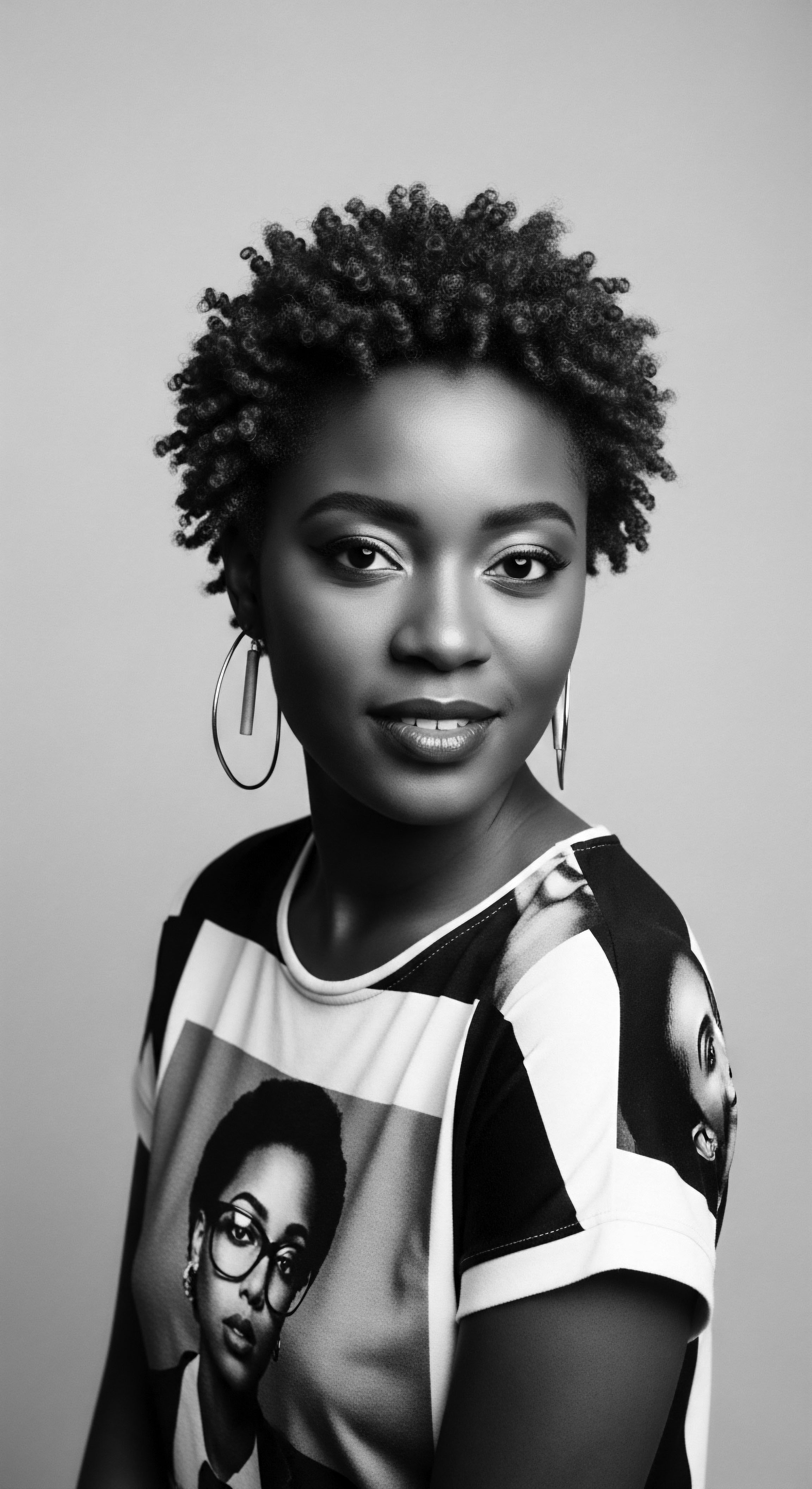
Naming Our Strands
The very lexicon used to describe textured hair today often finds its roots in the scientific observations of our ancestors, even if the formal terminology emerged much later. While modern classification systems exist, the intuitive understanding of different curl patterns and their needs has been present in various cultures for millennia. Consider the diverse ways different African communities described hair textures, often linking them to natural phenomena or the specific needs they presented.
- Kinky ❉ A term sometimes used to describe tightly coiled strands, reflecting their intricate, zig-zag patterns.
- Coily ❉ Denoting distinct, spring-like formations that can range from small, tight coils to more open spirals.
- Afro-Textured ❉ A broad category encompassing the spectrum of hair types found among people of African descent, emphasizing their natural state.
This deep understanding of hair’s inherent properties, gained through generations of observation and practice, laid the groundwork for care routines that prioritized lubrication and sealing, a practice now scientifically recognized for its efficacy on hair with a higher porosity and susceptibility to dehydration. What we now discuss as the science of lipids and protein interaction within the hair shaft, our ancestors understood through the visible health and vitality of their coils when tended with plant-derived resources.
| Oil Type (Traditional Origin) Shea Butter (West Africa) |
| Key Scientific Property Rich in fatty acids (oleic, stearic) |
| Coiled Hair Benefit Creates a protective barrier, reducing moisture loss. |
| Oil Type (Traditional Origin) Coconut Oil (Tropical Regions, Asia, Africa) |
| Key Scientific Property High in lauric acid, penetrates hair shaft |
| Coiled Hair Benefit Minimizes protein loss, strengthens strand integrity. |
| Oil Type (Traditional Origin) Castor Oil (Africa, Caribbean, India) |
| Key Scientific Property Dense, high ricinoleic acid content |
| Coiled Hair Benefit Conditions the scalp, provides a sealing effect on strands. |
| Oil Type (Traditional Origin) Argan Oil (Morocco) |
| Key Scientific Property Contains vitamin E, antioxidants |
| Coiled Hair Benefit Adds flexibility, reduces breakage. |
| Oil Type (Traditional Origin) These ancestral choices reflect an intuitive understanding of molecular benefits, passed through generations. |
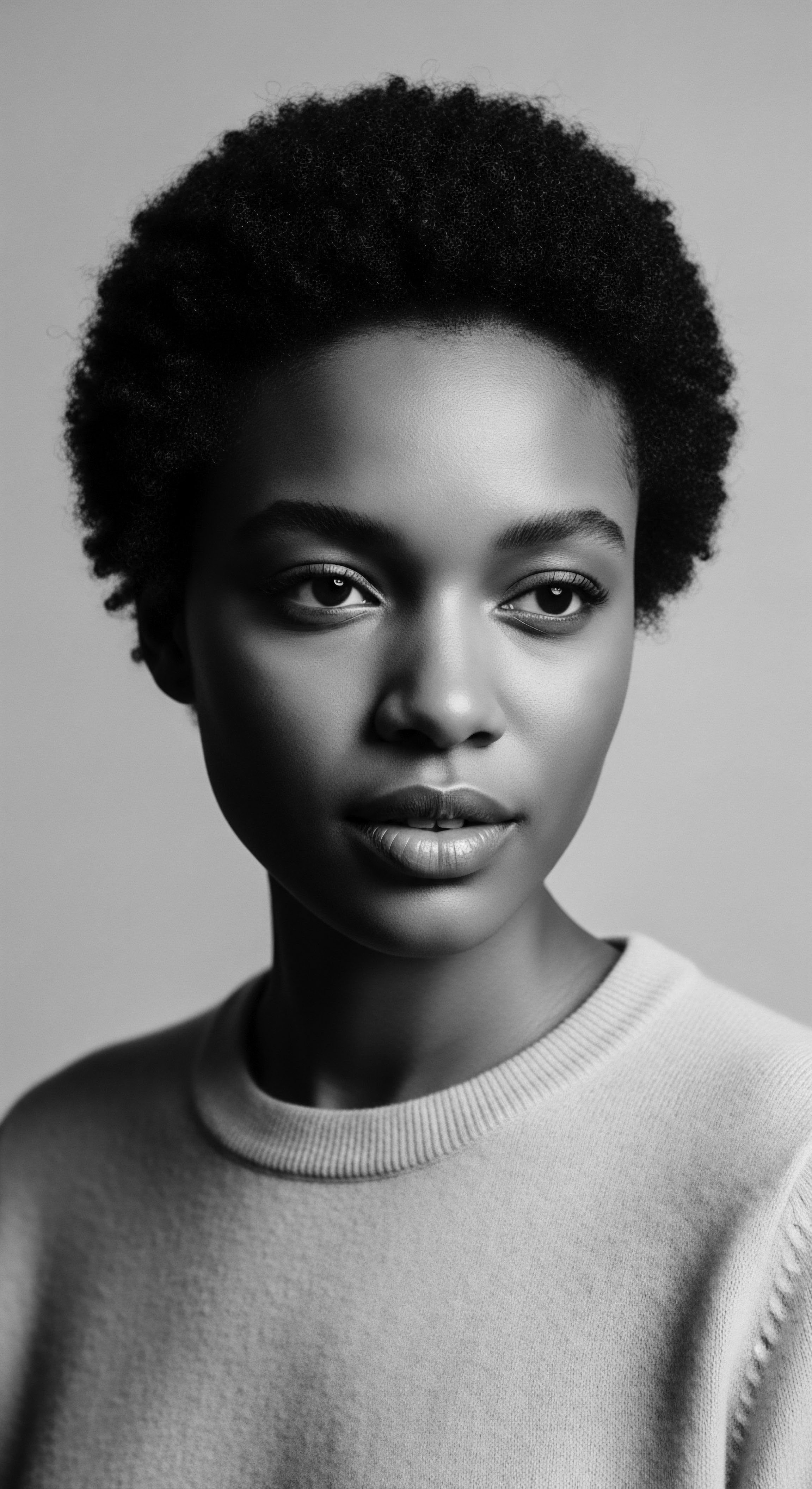
How Hair Growth Rhythms Inform Care?
Understanding the hair growth cycle, from its active growing phase (anagen) to its resting phase (telogen), influences how traditional oils are used. While oils do not directly alter the anagen phase’s duration, their application contributes to a healthy scalp environment, which is paramount for optimal growth. A nourished scalp, free from dryness and irritation, helps support the hair follicle as it produces new strands. Historically, this meant regular oil massages, not only for circulation but also to address common scalp issues.
For cultures where hair length signified wealth or beauty, preventing breakage during the anagen phase and protecting fragile ends became critical. Oils, in this context, were more than just conditioners; they were part of a ritual to preserve the integrity of the hair from root to tip, allowing it to reach its natural potential. This practical application, borne from centuries of observation, remains a bedrock of coiled hair care. The scientific understanding of the hair cuticle and cortex now explains why these traditional lipid-rich applications historically brought such discernible benefits to highly textured hair.

Ritual
The journey of traditional oils for coiled hair moves beyond elemental understanding, settling deeply within the realm of ritual. Here, the scientific properties of these oils become interwoven with the lived practices, communal bonds, and historical statements of textured hair heritage. The application of oils was rarely a sterile, hurried act; it was a ceremony, a shared moment, a repository of ancestral knowledge passed from matriarch to child. This is where the wisdom of the hand meets the wisdom of the plant, creating a continuity that defies time.

The Sacred Act of Oiling
Across various African cultures and throughout the diaspora, hair oiling was and remains a profound practice. It is a moment of calm, of focus, a physical connection to the self and to lineage. In many communities, this act was communal, a shared experience that strengthened familial ties and facilitated the transmission of cultural knowledge.
Mothers, aunties, and grandmothers would gather, their fingers tracing patterns, massaging oils into scalps, detangling with care, and braiding or twisting with intention. This was where stories were exchanged, wisdom imparted, and identity affirmed.
Consider the Basara women of Chad, whose ritual of applying a herb-infused oil mixture, known as Chebe, has been practiced for generations. This mixture is applied and braided into the hair weekly, a custom linked to remarkable length retention. This traditional practice, steeped in deep cultural meaning, aligns with modern scientific understanding of how reducing manipulation and providing consistent moisture and lubrication can significantly reduce breakage in fragile coiled hair, allowing it to reach its terminal length. This enduring tradition, despite its ancient roots, continues to be validated by the visible health and strength of their hair.
Oiling practices for coiled hair are not merely cosmetic; they are living traditions that preserve cultural identity and intergenerational connection.

Traditional Protective Styles and Oil’s Role
The art of protective styling, deeply rooted in African heritage, finds a constant companion in traditional oils. Styles like cornrows, braids, and twists were not only expressions of identity and community markers but also served a practical purpose ❉ shielding hair from environmental damage and reducing daily manipulation that could lead to breakage. Oils provided lubrication during the styling process, allowing tools and fingers to glide through coils with less friction, thereby minimizing stress on the delicate hair shaft.
An intricate braided style, for example, often took hours, sometimes days, to complete, and the application of oils during this extended process ensured the hair remained pliable and moisturized throughout. Without these natural lubricants, the friction inherent in braiding and twisting could lead to significant breakage, diminishing the protective benefit of the style itself. The oils would help seal the cuticle, keeping the strands hydrated within their protective cocoons for extended periods.

Tools of Care
The tools used in traditional hair care routines often worked in concert with natural oils to provide comprehensive care. Wide-tooth combs, often crafted from wood or bone, were used with a gentle hand and the assistance of a lubricating oil to detangle hair without tearing. The very design of these tools, predating mass-produced plastic combs, speaks to an understanding of coiled hair’s fragility and the need for gentle manipulation. The tactile experience of fingers massaging oils into the scalp, working them down the hair shaft, and carefully separating strands with artisanal combs speaks to a mindful approach to care.
During the era of the transatlantic slave trade, the deliberate stripping of traditional tools and access to indigenous oils was a forceful act of dehumanization. Enslaved Africans, denied their ancestral practices and resources, found ingenious ways to adapt, sometimes using animal fats or even butter to replace their customary oils, highlighting the deep-seated necessity of these lubricants for managing and protecting coiled hair. This historical adaptation underscores the inherent need for lipid-based treatments for textured hair, even under the most oppressive conditions.
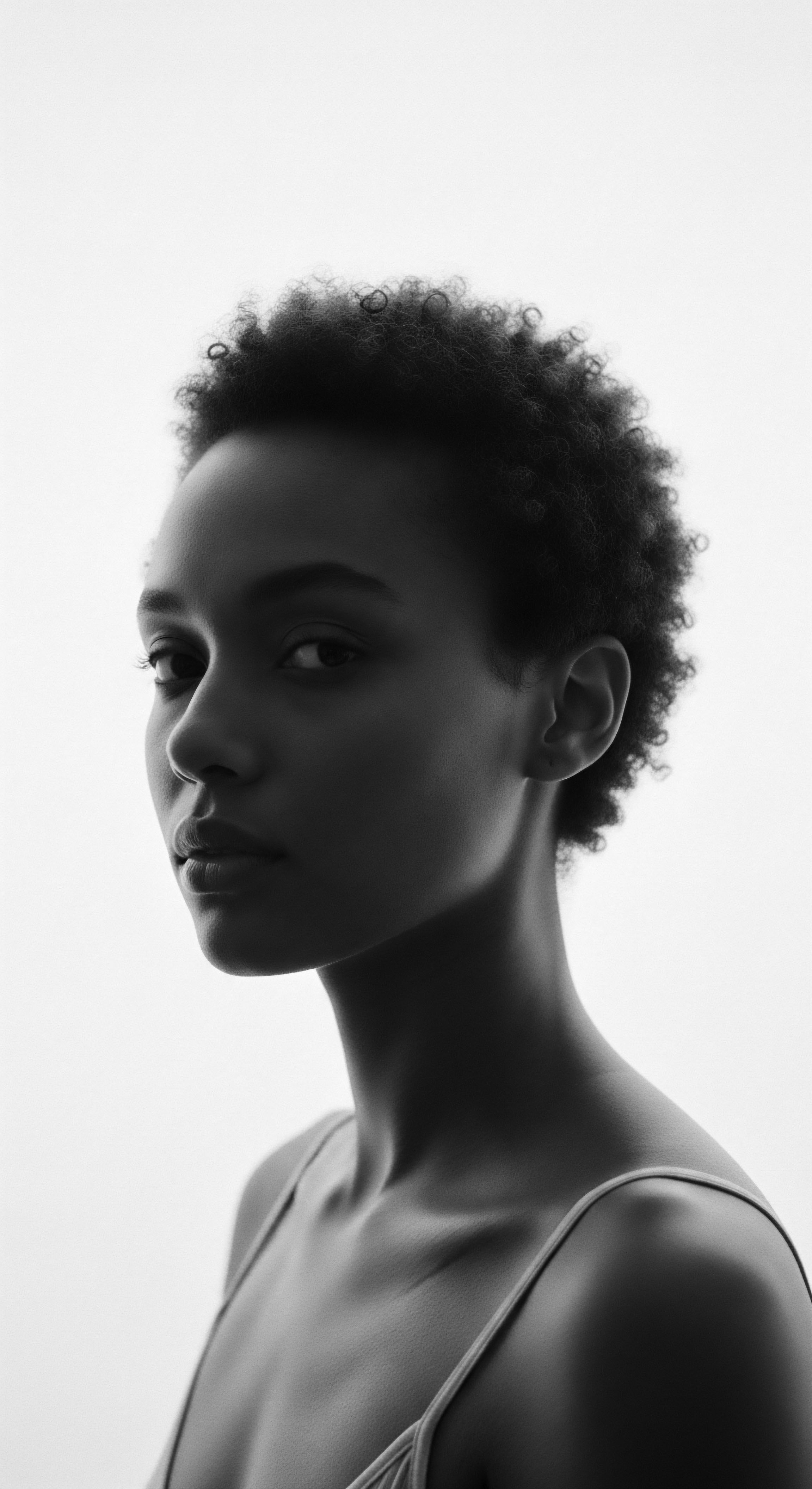
Transformations and Adornments
Beyond daily care, traditional oils played a part in the transformative and ceremonial aspects of hair. From preparing hair for elaborate adornments to maintaining the health of hair extensions crafted from natural fibers or other hair, oils were integral. The rich luster that oils imparted also contributed to the aesthetic appeal of styles, signifying vitality and well-being. This was particularly evident in rituals where hair was decorated with beads, cowrie shells, or other embellishments, as the oils helped to maintain the health and appearance of the hair supporting these ornaments.
The application of red ochre mixed with animal fat by Samburu and Rendille warriors in ritualistic hair dyeing, symbolizing status, demonstrates the deep cultural use of lipid-based mixtures beyond just daily conditioning. These ancient traditions confirm that the use of natural fats and oils for hair care extends far beyond mere hygiene, intertwining with social markers, spiritual beliefs, and aesthetic expression throughout history.
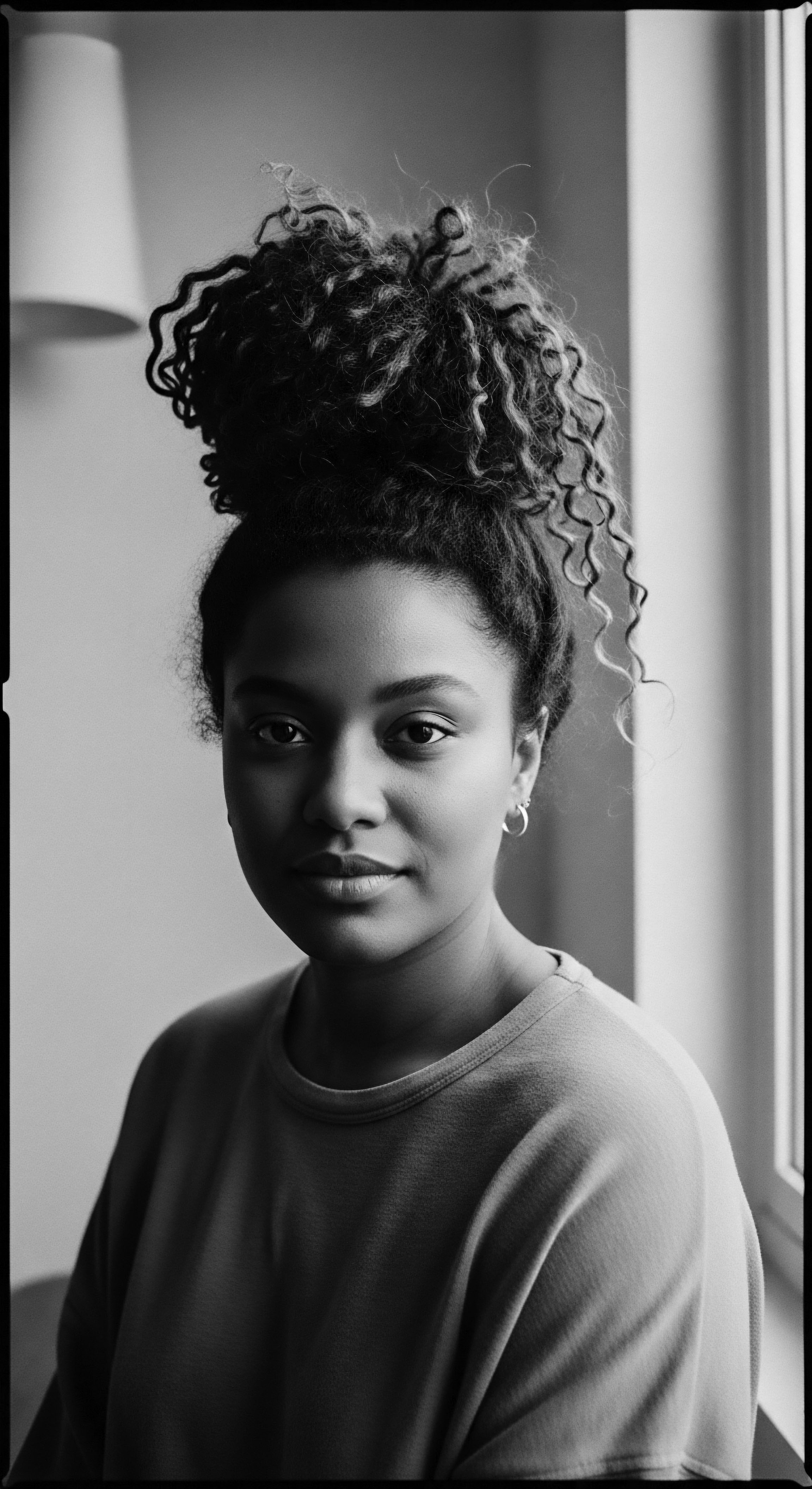
How do Ancestral Techniques Influence Modern Styling Today?
Ancestral styling techniques persist today, not merely as historical relics, but as living, evolving practices that continue to shape contemporary hair care. The emphasis on protective styles, for instance, remains a cornerstone of textured hair regimens globally. The underlying principle of minimizing manipulation and shielding delicate strands, which traditional oils supported, is still paramount.
Modern products may offer different textures or scents, yet their fundamental purpose mirrors the ancestral oils ❉ to lubricate, seal, and protect. The continuity lies in the why – the intrinsic needs of coiled hair – and the how – the deliberate, careful application of conditioning agents.

Relay
The enduring relevance of traditional oils for coiled hair is a testament to a complex interplay of genetic predisposition, cultural adaptation, and environmental pressures, all transmitted across generations. This intergenerational relay of wisdom, often through oral tradition and lived example, carries scientific insights long before formal laboratories articulated them. It is a knowledge system, deep and resilient, that has adapted and persisted even through periods of immense hardship and cultural suppression.

The Science Within Ancestral Practices
Many traditional oils, like shea butter, coconut oil, and castor oil, contain specific fatty acids that are highly beneficial for coiled hair. The reason for their efficacy lies in their molecular structure. For instance, Coconut Oil, rich in lauric acid, possesses a molecular weight small enough to penetrate the hair shaft, reducing protein loss and strengthening the internal structure of the hair. This characteristic is particularly important for coiled hair, which can be more susceptible to protein loss due to its structural characteristics and frequent manipulation.
Another example is Castor Oil, a dense, viscous oil with a high concentration of ricinoleic acid. This unique fatty acid is known for its humectant properties, drawing moisture from the air, and its ability to coat the hair shaft, providing a protective and sealing layer. The intuitive understanding of these properties, passed down through the ages in various African and Caribbean communities, speaks to an empirical science of observation and outcome. While the specific chemical compounds were unknown, the tangible results – reduced breakage, increased shine, improved manageability – were clear and replicable.
| Oil Coconut Oil |
| Dominant Fatty Acid Lauric Acid (saturated) |
| Hair Benefit Deep protein penetration, reduces hygral fatigue. |
| Oil Shea Butter |
| Dominant Fatty Acid Stearic Acid, Oleic Acid (saturated, monounsaturated) |
| Hair Benefit Forms occlusive barrier, seals moisture. |
| Oil Castor Oil |
| Dominant Fatty Acid Ricinoleic Acid (unsaturated hydroxy fatty acid) |
| Hair Benefit Humectant, strengthens shaft, potential for growth stimulation. |
| Oil Jojoba Oil |
| Dominant Fatty Acid Wax esters (mimics sebum) |
| Hair Benefit Balances scalp oils, conditions without greasiness. |
| Oil The molecular composition of these oils aligns with the unique structural and moisture needs of coiled hair. |

Historical Resistance and Reclamation
The relevance of traditional oils extends beyond their biophysical benefits; it is deeply rooted in the historical struggle for identity and self-determination. During the periods of slavery and colonialism, attempts were made to strip individuals of their cultural markers, including their hair practices. Slave traders often shaved the heads of captives, a dehumanizing act aimed at erasing African identity. Traditional oils and tools became inaccessible, forcing adaptations that sometimes involved harsh substitutes.
Despite this, the knowledge of hair care persisted. Acts of resistance included secretly maintaining hair using whatever was available and passing down oral traditions. The mid-20th century, particularly during the Civil Rights Movement, saw a powerful resurgence of natural hair as a symbol of Black pride and activism.
This movement, affirming the inherent beauty of Afrocentric aesthetics, spurred a renewed interest in traditional hair care methods and the oils that supported them. The practice of wearing natural hair, often nourished by these ancestral oils, became a conscious rejection of Eurocentric beauty standards and an affirmation of self and heritage.
A compelling historical example of this resilience lies in the ingenious ways enslaved people sometimes used their hair. There are accounts suggesting that intricate braid patterns were sometimes used to store seeds for planting at new, unknown destinations, or even to map escape routes, literally carrying pathways to freedom within their coils. This act, demanding meticulous care and the application of oils to maintain the hair’s integrity, transforms hair care from a mere aesthetic practice into a profound act of survival and cultural preservation. The oils enabled the hair to endure such intricate styling and prolonged periods without manipulation, thus becoming silent accomplices in the quest for liberation.
The continued use of traditional oils embodies not only biological efficacy but also a powerful cultural and political statement of self-acceptance.

Intergenerational Transmission of Wisdom
The transmission of knowledge surrounding traditional oils for coiled hair has primarily occurred through intergenerational learning. This communal aspect sets these practices apart from the often individualized approach of modern beauty. In many Black and mixed-race families, the ritual of “wash day” or hair styling sessions became a sacred space for bonding, storytelling, and the sharing of ancestral wisdom.
Younger generations learned not just the mechanics of applying oils, but the intuitive understanding of how much to use, when to reapply, and which oils suited particular hair needs. This tacit knowledge, acquired through observation and hands-on experience, often pre-dates and complements formal scientific studies. The cultural value placed on healthy, well-maintained hair within these communities created a powerful incentive for this knowledge to be preserved and passed down.
- Observation and Emulation ❉ Children learned by watching their elders, replicating movements and absorbing the rituals’ rhythms.
- Direct Instruction ❉ Hands-on teaching, with elders guiding younger hands through detangling, sectioning, and oil application.
- Storytelling and Context ❉ Narratives shared during hair sessions reinforced the cultural and historical significance of the practices.
This enduring cycle of learning ensures that the practical application of oils for coiled hair remains firmly rooted in a holistic framework that connects physical care to cultural identity and shared heritage. The scientific understanding gained today only serves to affirm what generations already knew through experience.

Future Trajectories and Present Affirmations
The enduring relevance of traditional oils is further affirmed by contemporary trends and scientific inquiry. As individuals increasingly seek natural, holistic, and culturally authentic approaches to beauty, these ancestral oils are experiencing a resurgence in popularity. Modern scientific research continues to investigate the specific compounds within these oils, validating their traditional uses for moisturizing, strengthening, and promoting scalp health.
This dialogue between ancient wisdom and contemporary science creates a dynamic landscape where heritage-based practices are not simply preserved but are actively re-interpreted and integrated into diverse care regimens. The traditional oils stand as a testament to ingenuity, adaptability, and the profound, living connection between textured hair and its heritage.
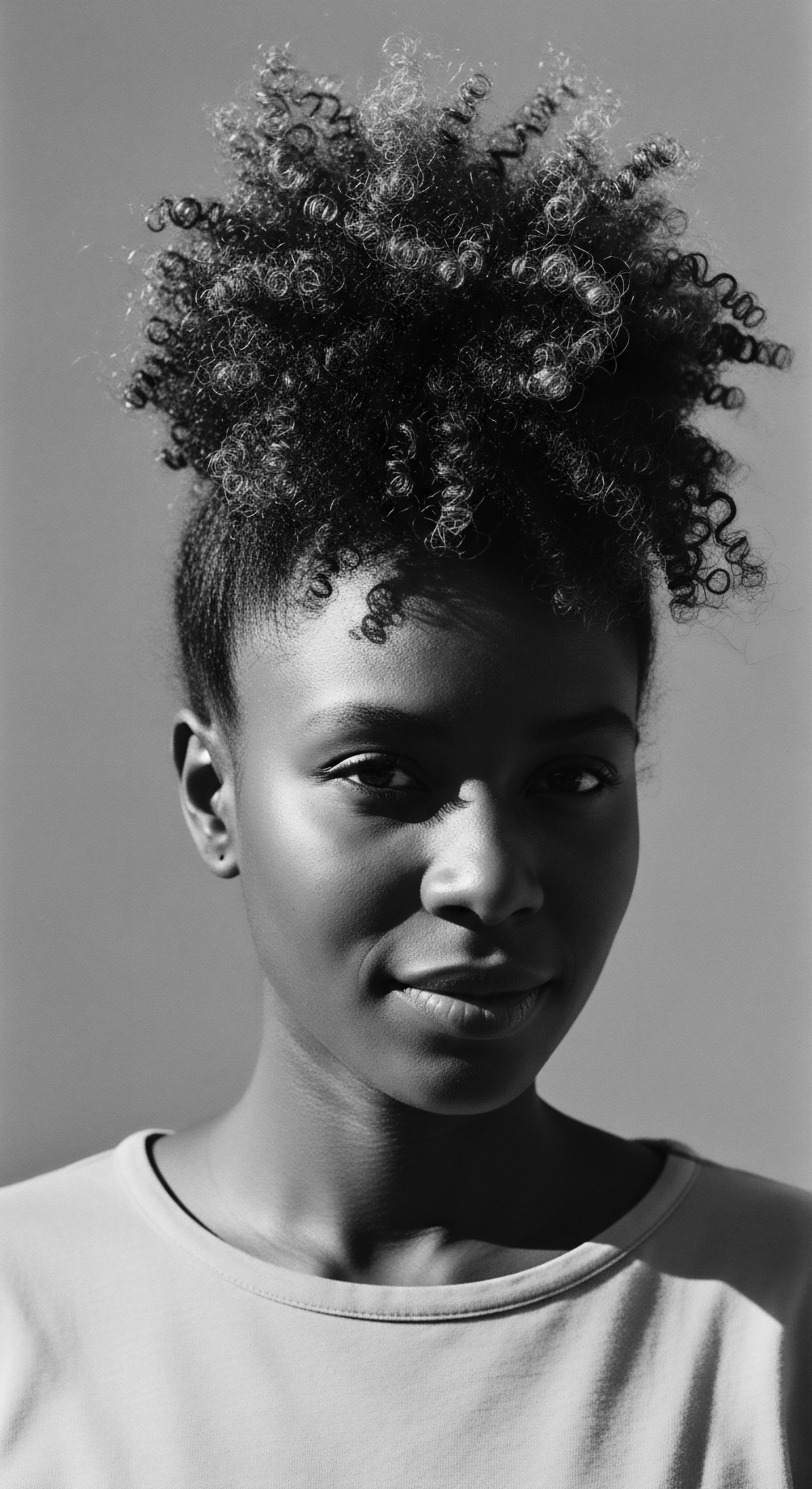
Reflection
The story of traditional oils for coiled hair is a living archive, breathing with the spirit of generations. It speaks to more than just the mechanics of moisturization or the chemistry of lipids; it whispers of resilience, identity, and the unbroken chain of ancestral wisdom. From the fundamental understanding of hair’s unique structure, through the tender rituals of care passed hand-to-hand, to the powerful declarations of self in every coil and wave, these oils remain a luminous thread.
They remind us that true beauty care is often a conversation with our past, a honoring of those who came before, and a celebration of the profound vitality held within each strand. This enduring legacy is a constant affirmation that the Soul of a Strand is indeed, limitless.

References
- Allen, Jennifer. 2023. “What Every Dermatologist Must Know About the History of Black Hair.”
- African American Museum of Iowa. “History of Hair.”
- Ajoke Brown Media. 2025. “Celebrating the Versatility and Beauty of Natural Black Hair.”
- Brummett, Barry. 2015. Rhetoric in Popular Culture. Sage Publications.
- Chosen Care. 2024. “Celebrating Black Hair ❉ Empowering Beauty and Resilience.”
- Cécred. 2025. “Understanding Hair Oiling ❉ History, Benefits & More.”
- GirlsOnTops. 2020. “A Sacred Legacy ❉ On Black Hair And The Revolutionary Power of Self-Exp.”
- Halo Collective. “End Hair Discrimination.”
- Lenz, Paul. 2025. “A history of… hair products.”
- Mango Butterfull Cosmetics. 2022. “What is the purpose of the oil bath?”
- Obé Headwear. 2024. “Significance of headwraps.”
- Okpalaojiego, Jennifer. 2024. “The Remarkable History Behind Black Hairstyles.”
- Ouma, Christine. 2022. “The connection between hair and identity.”
- PsychoHairapy. 2024. “Our Hair ROOTS ❉ Incorporating our Black Family Hair Traditions and Routines as a Coping Technique to Increase Positive Mental Health.”
- ResearchGate. “Herbal hair oil ❉ A review.”
- Safo Hair. 2024. “Embracing the Roots ❉ Hair Care Rituals in African Cultures and the Val.”
- Salford Students’ Union. 2024. “The Remarkable History Behind Black Hairstyles.”
- Substack. 2025. “Ancestral Hair Rituals to Nourish Your Hair and Soul.”
- Vercida. “A Black “Hair” story Crowning Our Glory.”
- Vydoorya. 2024. “Kerala’s Heritage in a Bottle ❉ The Benefits of Traditional Hair Oils.”
- Weitz, Rose. 2001. “Hair as a Cultural Artifact.” Journal of Health and Social Behavior .
- Nyela, Océane. 2021. “Braided Archives ❉ Black hair as a site of diasporic transindividuation.” YorkSpace.
